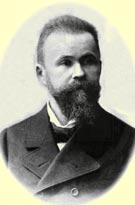Wernicke's area
From Psy3242
Wernicke's Aphasia


Aphasia is a condition caused by neurological damage or disease in which a person's previous capacity to understand or express language is impaired. This may affect a person's ability to speak, listen, read or write.
Carl Wernicke (1848-1905) was a German physician, anatomist, psychiatrist and neuropathologist who studied the effects of brain disease on speech and language. He discovered that damage to the left posterior, superior temporal gyrus resulted in deficits in language comprehension and so this area of the brain is now known as Wernicke's area and the associated syndrome as Wernicke's aphasia.
Most cases of aphasia are caused by damage to the left posterior, superior temporal gyrus and this is the dominant hemisphere for approximately 95% of right handed people and 60-70% of left handed people.
When a person is affected by Wernicke's aphasia their speech is overflowing with words that do not convey the speaker's meaning. The pitch and rhythm of the speech sound normal but the words may either be used incorrectly or made up of words with no meaning.
It can be possible for children with moderate Wernicke's aphasia, following a head trauma or other neurological event to recover some language ability with the aid of speech therapy. However, when the damage is severe there is less chance.
Wernicke was also responsible for the idea that brain function is highly localised and could be mapped precisely and anatomically.
Contents |
Links
www.neurology.utoronto.ca
www.wickipedia.com
www.healthline.com
www.everything2.com

History
This area was first identified by Carl Wernicke in 1874, after studying the aphasia caused by damage to Broca's area. He distinguished different types of aphasia, such as fluent aphasia and conduction aphasia that resulted from damage to this part of the temporal lobe. The location of Wernicke's area is described as the posterior part of the superior temporal gyrus on the left hemisphere, immediately behind Heschl's gyrus.
Purpose
Wernicke's area is responsible for linking speech sounds to stored representations of words. This area has neural pathways to Broca's area, which is involved in the generation of speech, and the angular gyrus, which is important in understanding visually represented material. Wernicke's area receives the processed speech sounds from Heschl's gyrus, which come from the ears, to be referenced to actual words.
Disorders
Damage to Wernicke's area causes language disorders, namely Wernicke's aphasia. This results in problems with fluent but non-sensical speech, from the ineffective monitoring of self-generated speech; and difficulties in understanding spoken language, from damage to one's auditory memory of words. The disordered speech is characterized by neologisms, non-words or made-up words, and paraphasias, semantically related but inappropriate words.

Later Research
Lichtheim's later research yielded a model that linked Broca's area and Wernicke's area on a triangle with the third point being a concept center, in order to map the different types of aphasia resulting from damage to the connections between the three.
